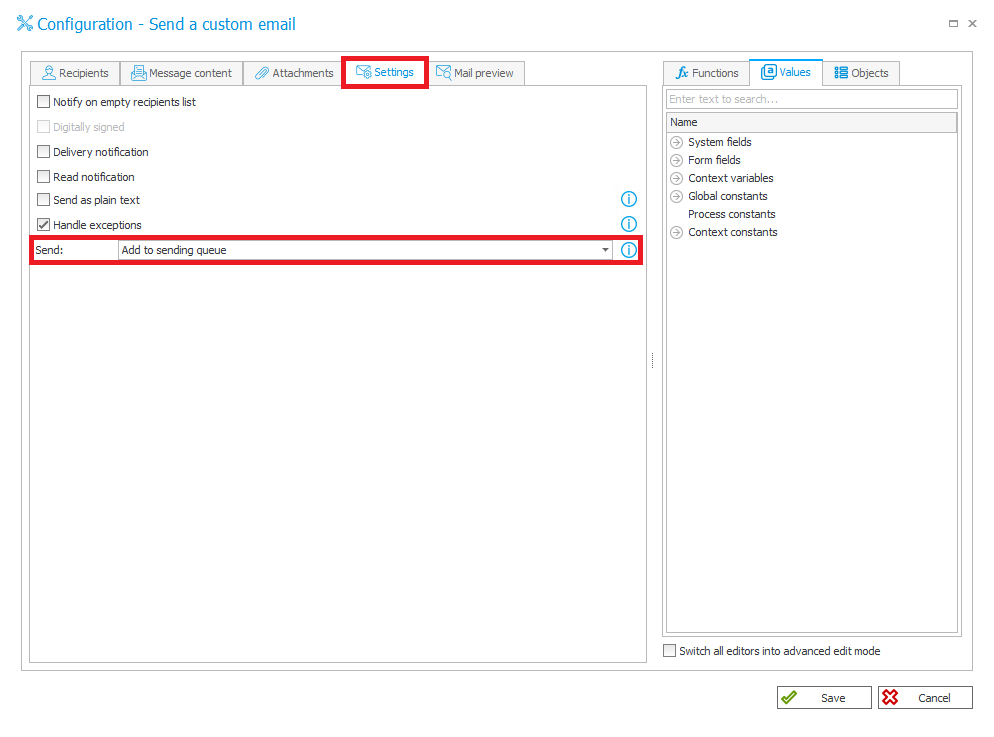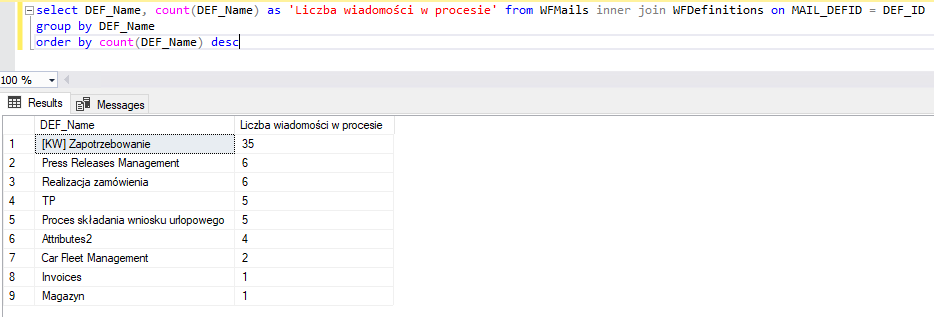WFMails table description
Applies to version: 2020.1.x and above; author: Dawid Golonka
Introduction
The processes designed in WEBCON BPS use the e-mail sending actions in their workflows – e.g. e-mails about active tasks waiting for the user or e-mails containing various reports.
The configuration of sending e-mails was described on the technical blog -> E-mails and templates in BPS.
WEBCON BPS allows you to set a way of sending e-mails in which the outgoing notifications can be queued by the system and then sent according to the priority assigned to them. The queue can be stored in the WFMails table in the database.
Enabling the method of sending e-mails with queue support
To enable the message queueing, go to the configuration of the “Send a custom e-mail” action and in the “Settings” tab select the “Add to sending queue” option. This option is set by default.

Fig. 1. The “Send a custom e-mail” configuration
WFMails table structure
A description of WFMails table columns:
MAIL_Status – information about the status of the message
MAIL_AttemptsNumber – a number of attempts to send a message
MAIL_LastAttemptTime – a last attempt to send a message
MAIL_WFDID – an instance ID from which the action was initiated
MAIL_STPID – a step ID at which the message was queued
MAIL_DEFID – a process ID in which the action was executed
MAIL_Sender – an sender of the e-mail
MAIL_Subject – a subject of the message
MAIL_Body – a content of the message
MAIL_Recipients – a recipient of the message
MAIL_ErrorDetails – information about the error of sending e-mail
Example of how to interpret database info
The „Send a custom e-mail” action was created on the workflow used to register an employee’s vacation request at the “Acceptance” path.

Fig. 2. The workflow used to register a vacation request
Below there is the result of an example query which returns the data from the WFMails table. The query returned the results for a specified – given ID of the instance in the workflow.

Fig. 3. The query to the WFMails table
The query is filtered by the recipient’s e-mail address below:

Fig. 4. The query to the WFMails table
Example queries for all data contained in the database
The query returning a summary of how many recipients received e-mails:

Fig. 5. Summary of the number of e-mails received by each recipient (applies to all processes in the database)
The query returning information about notifications that were not sent:

Fig. 6. Summary of information about the notifications that were not sent due to an error (applies to all processes in the database)
The query returning a summary of how many of messages were sent from individual processes:

Fig. 7. The number of notifications sent from each of the processes

